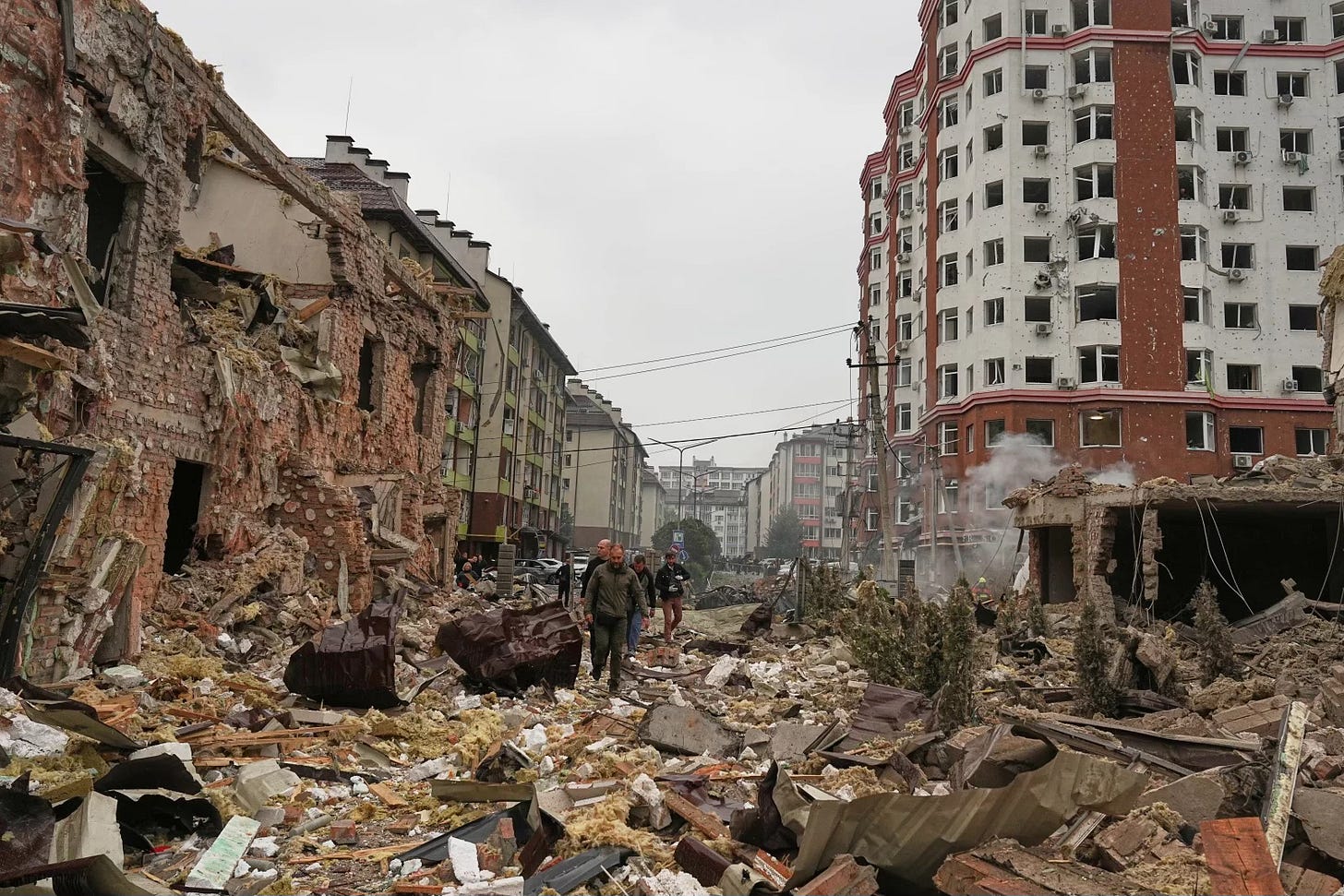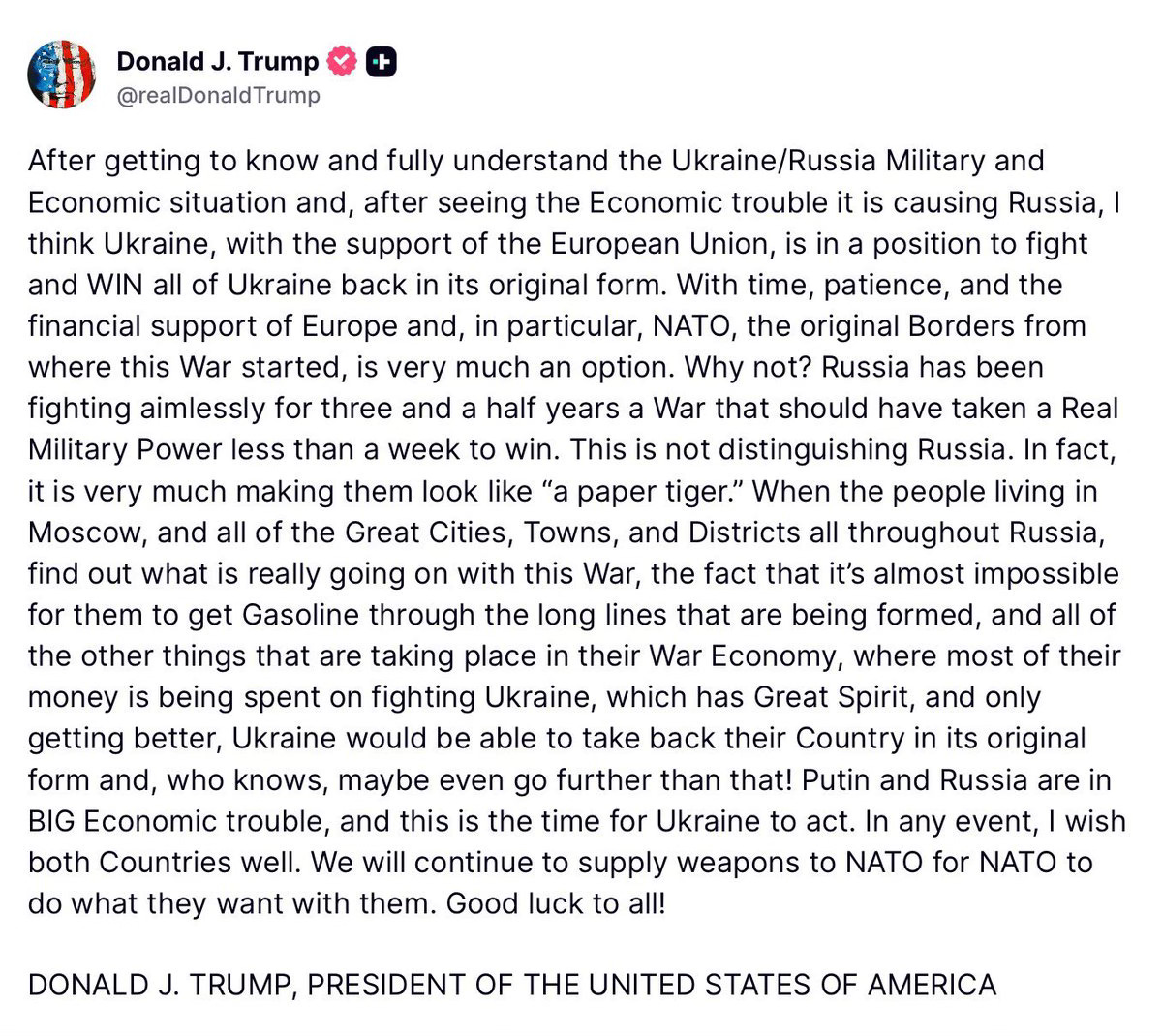The Approaching Endgame of the Ukraine War
State-on-state wars of the scale of the Russia-Ukraine war rarely end through outright collapse or surrender. They end at the negotiating table, where the balance of leverage determines outcomes. At times, the leverage is entirely one-sided. For example, Japan and Germany had little leverage after World War II, and the final settlement was mostly dictated by the Allies.
That is the lens through which to read recent developments in this war. Ukraine is maximizing its leverage by extending the fight to Russian soil, using drone strikes on oil refineries and other infrastructure to degrade Russia’s economic base and its military capabilities.
Over a quarter of Russia’s oil refining capacity is down, and if Russia cannot sustain high enough oil exports, inflation will spiral, the ruble will collapse further, and the state will struggle to fund the war. Russia has been unable to break the stalemate. If Kyiv can sustain this, it may reach negotiations with a stronger hand than anyone thought possible.
In response, Russia has initiated a hybrid war with the rest of Europe. The goal of this is unclear. It could be that Russia is threatening the prospect of a wider war to make the Europeans pressure Ukraine to stop its drone strikes in Russian territory. Russian drones and aircraft have intruded into NATO airspace, including drones over Romania, Poland, and Denmark, and fighter jets over Estonia and worryingly close to Alaska. Axios has a great summary of this.
But NATO states are increasingly united in response. Estonia convened an emergency UN Security Council meeting where, along with Poland, it pledged to shoot down Russian assets in its airspace. There is no indication from European members of NATO of backing down to Russia as they continue to scramble fighter jets. Instead of dividing NATO, Moscow’s provocations are hardening the alliance, despite the U.S. signaling reluctance to support directly.
In Ukraine, Russia’s campaign remains brutal but strategically barren, focused on terrorizing the Ukrainian population by striking civilian areas. But the offensive that began earlier this year has yielded only marginal gains: less than one percent of Ukraine’s territory captured in exchange for at least 200,000 casualties. Each failed push leaves Russia weaker, not stronger, at the bargaining table.
It has escalated interference in the former Soviet state of Moldova, where authorities arrested dozens of individuals tied to a Russian campaign to destabilize the upcoming elections. This impeded a multi-vector effort to undermine elections and prevent EU accession. Russia has long used its occupation of the Transnistria of Moldova as leverage against Chisinau, but the government’s proactive crackdown shows much less deference to Moscow than in the past.
Russia’s diplomatic standing also eroded significantly this week. Donald Trump’s remarkable change of heart, suggesting that Ukraine can recover all its territory and win, is a shift from accommodation and aligned with the push to reduce the global market for Russian oil. And evidence of Russian war crimes continues to surface, including torture of civilians and forced population transfers.
Wars of attrition typically do not conclude with collapse but with negotiated settlements. The side that commands leverage defines the terms. Ukraine’s strategy is to hold the line while weakening Russia’s economic base and ensuring continued Western backing. Moldova’s resistance, NATO’s firmer stance, and even Trump’s shift all tilt in Kyiv’s favor. Russia’s escalations are leaving it gradually weaker.





